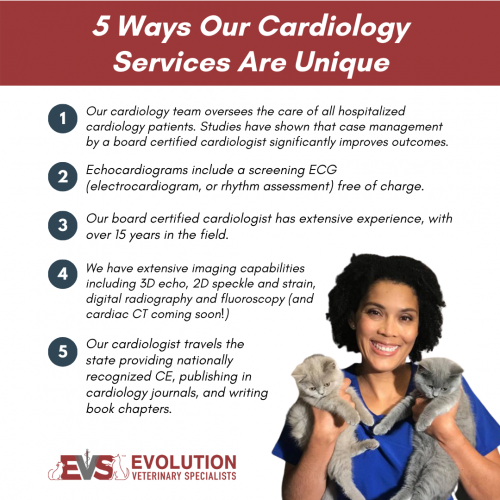Step-by-Step Preparation Tips Before Scheduling CT Scans For Animals}
Wiki Article
What You Required to Understand About Veterinary Providers: A Summary of Diagnostic Equipments and Procedures
Vet solutions play an important role in preserving the health and wellness of pets. Routine check-ups can reveal concealed health concerns at an early stage. Different analysis devices and procedures, such as blood examinations and imaging techniques, provide vital insights into an animal's wellness. Comprehending these methods is vital for pet proprietors. What specific analysis treatments are most commonly utilized, and exactly how can they affect a pet's treatment plan?Relevance of Routine Vet Examinations
While lots of family pet owners may underestimate the importance of normal vet check-ups, these visits are necessary for maintaining a pet's general wellness. Routine check outs to the vet enable for very early detection of prospective wellness issues before they intensify right into severe problems. Routine check-ups commonly consist of inoculations, which are necessary for preventing contagious conditions that might badly affect a family pet's health. Additionally, these visits provide an opportunity for vets to examine the pet's weight, dental wellness, and total problem, guaranteeing that the family pet is prospering. Throughout these gos to, family pet owners can also get important suggestions on diet, workout, and preventive care customized to their specific family pet's demands.Usual Analysis Procedures in Veterinary Medicine
In vet medication, exact diagnosis is crucial for efficient treatment. Common analysis procedures consist of blood testing techniques, advanced imaging technologies, and urinalysis, each playing a substantial function in determining wellness problems. Understanding these techniques improves the ability to supply proper look after pet people.Blood Checking Methods
Blood testing methods work as necessary analysis devices in veterinary medicine, enabling veterinarians to assess the wellness of pets accurately. These methods entail collecting blood samples to evaluate numerous components, such as red and white blood cells, platelets, and biochemical markers. Typical tests consist of complete blood counts (CBC), which review general health and detect infections, and biochemical panels, which analyze organ function and metabolic standing. Additionally, serological tests can determine certain illness through antibody discovery. Blood testing is minimally intrusive and gives vital information that assists in identifying problems, monitoring wellness condition, and assessing feedbacks to therapies. On the whole, these techniques play a vital duty in ensuring ideal take care of family pets and animals alike.Imaging Technologies Used
Analysis imaging technologies are necessary tools in veterinary medication, complementing blood screening strategies by offering visual understandings right into an animal's inner structures. Typical imaging techniques consist of X-rays, which work for examining bone fractures and discovering international things, and ultrasound, which permits for real-time visualization of soft tissues and body organs. Magnetic vibration imaging (MRI) offers in-depth pictures of intricate physiological locations, particularly in neurological analyses. Calculated tomography (CT) gives cross-sectional photos, enhancing diagnostic precision for numerous conditions. Each of these modern technologies aids veterinarians in detecting diseases, intending treatments, and monitoring recuperation. By including imaging innovations, vet professionals can better examine a pet's health and wellness and make notified choices concerning their care.
Urinalysis and Diagnostics
Urinalysis acts as a vital analysis tool in veterinary medicine, offering useful understandings into a pet's overall health and aiding in the discovery of numerous problems. This non-invasive treatment evaluates pee examples to analyze kidney function, hydration standing, and metabolic problems. Common parts checked out consist of details gravity, pH levels, glucose, healthy proteins, and the existence of blood or microorganisms. Unusual findings can suggest problems such as urinary system tract infections, diabetic issues mellitus, or kidney illness. To enhance diagnostic precision, urinalysis is typically executed along with various other examinations, such as blood job and imaging research studies. Early discovery through urinalysis can bring about timely interventions, enhancing the diagnosis for many veterinary clients. Therefore, it is a crucial aspect of thorough vet treatment.Comprehending Blood Examinations and Laboratory Evaluation
Recognizing blood examinations and research laboratory evaluation is crucial in veterinary medication as it assists in identifying numerous health problems in pets. Different kinds of blood tests offer important details concerning a pet's interior state, while interpreting laboratory results calls for cautious consideration of many variables. This section will certainly discover the kinds of blood tests offered and the significance of their outcomes.Kinds of Blood Examinations
Blood tests play a crucial role in veterinary medication, supplying vital understandings into an animal's health standing. Various types of blood tests are used, each serving different purposes. Full blood matters (CBC) assess general health and identify conditions such as anemia or infection. Biochemical profiles examine body organ function by measuring enzymes and electrolytes, providing understandings right into metabolic health. Serological tests determine particular antibodies or microorganisms, assisting in the diagnosis of infections or autoimmune diseases. Blood typing warranties risk-free transfusions, while coagulation examinations gauge the blood's ability to clot, crucial for surgeries. These tests collectively improve medical diagnosis, treatment preparation, and monitoring of an animal's health and wellness, highlighting the importance of extensive research laboratory analysis in veterinary treatment.
Interpreting Laboratory Outcomes
A thorough evaluation of laboratory results is crucial for accurate diagnosis and therapy in veterinary medication. Translating lab results calls for an understanding of regular recommendation arrays and the importance of variances. Blood examinations can expose numerous wellness signs, such as organ feature, electrolyte equilibrium, and the existence of infections. Veterinarians should consider the entire clinical image, including the animal's history, health examination findings, and any symptoms provided. Variants in results may arise from variables such as age, type, and underlying health conditions. Laboratory results should not be seen in isolation but instead as part of a comprehensive analysis technique. Precise interpretation enables customized therapy strategies and far better end results for vet clients.Imaging Techniques: X-rays, Ultrasounds, and Beyond
Imaging techniques are essential tools in veterinary medication, providing essential insights into the health and wellness and well-being of animals. Amongst one of the most frequently used approaches are Ultrasounds and x-rays. X-rays are indispensable for visualizing bone structures, assisting vets determine cracks, growths, or international things. This approach is non-invasive and fast, making it optimal for immediate situations.Ultrasounds, on the other hand, make use of sound waves to create pictures of soft cells and organs. This technique is particularly valuable for analyzing the heart, abdomen, and reproductive organs, enabling vets to analyze conditions like fluid build-up or organ abnormalities.Beyond X-rays and ultrasounds, advanced imaging techniques such as computed tomography (CT) and magnetic vibration imaging (MRI) are increasingly made use of in vet method. These approaches offer thorough cross-sectional images, enhancing the accuracy of medical diagnoses and treatment plans. Board Certified Veterinary Cardiologist. In general, imaging methods play a crucial function in guaranteeing efficient vet treatmentThe Duty of Biopsies in Diagnosing Animal Health Issues
Precision in identifying health concerns in pets commonly rests on the use of biopsies, which offer definitive info regarding cells irregularities. A biopsy includes the removal of a small example of tissue for assessment under a microscopic lense, enabling veterinarians to determine different problems, including infections, tumors, and inflammatory conditions. This diagnostic device is necessary for differentiating between deadly and benign developments, assisting therapy choices, and examining the intensity of a condition.Biopsies can be carried out using numerous methods, such as needle aspiration, incisional biopsies, or excisional biopsies, depending on the place and sort of cells involved. The choice of method might impact recuperation time and the quantity of tissue accumulated. Ultimately, the details gleaned from a biopsy can lead to targeted treatments, improving results for family pets facing serious health obstacles. Veterinarians emphasize the value of this procedure in achieving exact diagnoses and reliable therapy plans.Advanced Diagnostic Tools: Endoscopy and CT Scans

Advanced analysis devices, such as endoscopy and CT scans, play a vital role in modern-day veterinary medicine, using non-invasive methods to imagine inner structures and identify numerous problems in pets. Endoscopy includes making use of a versatile tube geared up with an electronic camera, allowing veterinarians to analyze the gastrointestinal tract and breathing system straight. This method can reveal problems such as growths, international bodies, or swelling, making it possible for targeted treatment plans.CT scans, on the various other hand, utilize sophisticated imaging technology to create comprehensive cross-sectional photos of the body (Ultrasound For Dogs). This technique is especially helpful for examining facility structures like the brain, spinal column, and joints. By providing high-resolution pictures, CT scans aid veterinarians in determining concerns that might not be apparent with typical radiography. Together, these innovative devices improve diagnostic precision, enhance treatment end results, and ultimately add to far better total pet wellness administration

Analyzing Examination Outcomes: What Family Pet Owners Ought To Know
Recognizing examination outcomes can be a challenging job for pet owners, particularly after advanced treatments like endoscopy and CT scans have actually been done. Interpreting these results needs a grasp of clinical terminology and a clear understanding of what the findings indicate concerning the pet's health and wellness. Vets often supply descriptions, yet the intricacy of the results can still lead to confusion.Pet owners must proactively involve in conversations with their vets, asking concerns to clear up any kind of unpredictabilities. It is important to comprehend abnormal versus normal outcomes and the implications for the animal's treatment plan. Additionally, identifying that some outcomes may need more screening or tracking can help owners remain notified regarding their animal's health trip. Inevitably, a collective strategy between family pet proprietors and vet specialists fosters much better wellness end results and enhances the general care experience for pets.Regularly Asked Concerns
Just how Do I Pick the Right Vet Center for My Animal?
Choosing the best vet clinic entails investigating regional options, evaluating credentials, checking out facilities, and evaluating staff interactions (CT Scans For Animals). Prioritizing suggestions from trusted sources can aid assure the best care and atmosphere for an animal's health requirementsWhat Should I Do if My Family Pet Refuses to visit the Vet?
When an animal refuses to go to the veterinarian, it's a good idea to continue to be tranquil, use treats or playthings to entice them, and take into consideration setting up a home check out if anxiousness continues. Perseverance and favorable reinforcement are key.Are There Telehealth Options for Veterinary Solutions?
Telehealth choices for vet services are increasingly available, enabling animal proprietors to speak with vets remotely. These solutions allow conversations Ultrasound For Dogs concerning wellness concerns, recommendations on minor disorders, and follow-ups without needing to check out a center.
Exactly how Often Should My Pet Dog Have Oral Check-Ups?
The frequency of oral exams for pets usually depends on their age and breed. Generally, vets recommend yearly oral evaluations, although some pets may require even more regular sees to keep perfect dental health and wellness.
What Are the Prices Related To Vet Diagnostics?
The expenses related to veterinary diagnostics can vary commonly, typically varying from basic examinations like blood work to innovative imaging methods. Aspects influencing costs include the center's location, equipment made use of, and specific examinations needed for each and every animal. Veterinary solutions play a vital duty in preserving the health and wellness of pets. While many pet proprietors may underestimate the importance of routine veterinary examinations, these appointments are necessary for preserving an animal's overall wellness. Furthermore, these appointments give a possibility for veterinarians to evaluate the pet's weight, dental health, and total condition, guaranteeing that the pet is growing. Precision in diagnosing health and wellness problems in pet dogs commonly hinges on the use of biopsies, which provide definitive details concerning tissue abnormalities. In addition, acknowledging that some outcomes might need additional screening or monitoring can help owners remain educated about their family pet's wellness journey.Report this wiki page